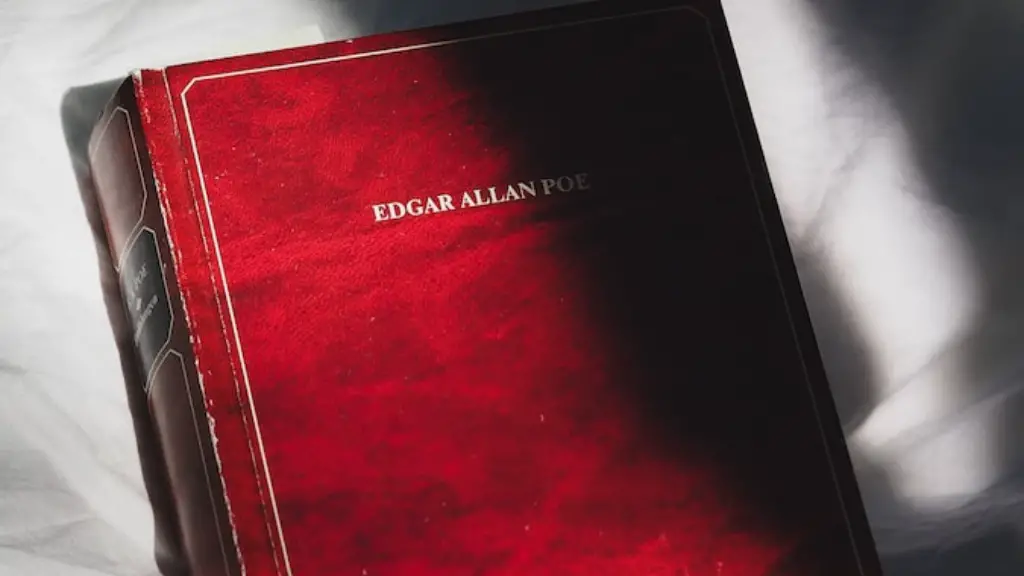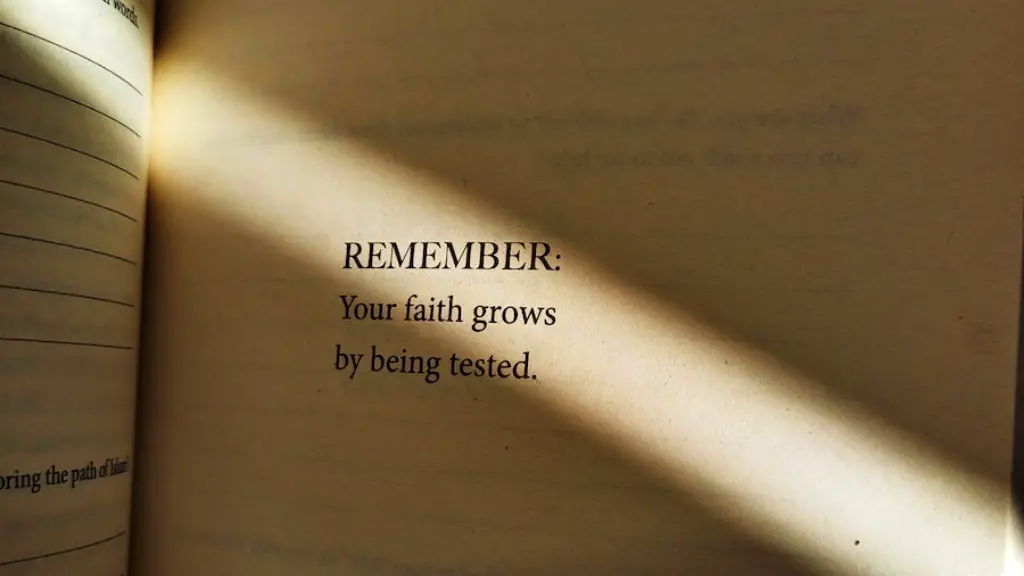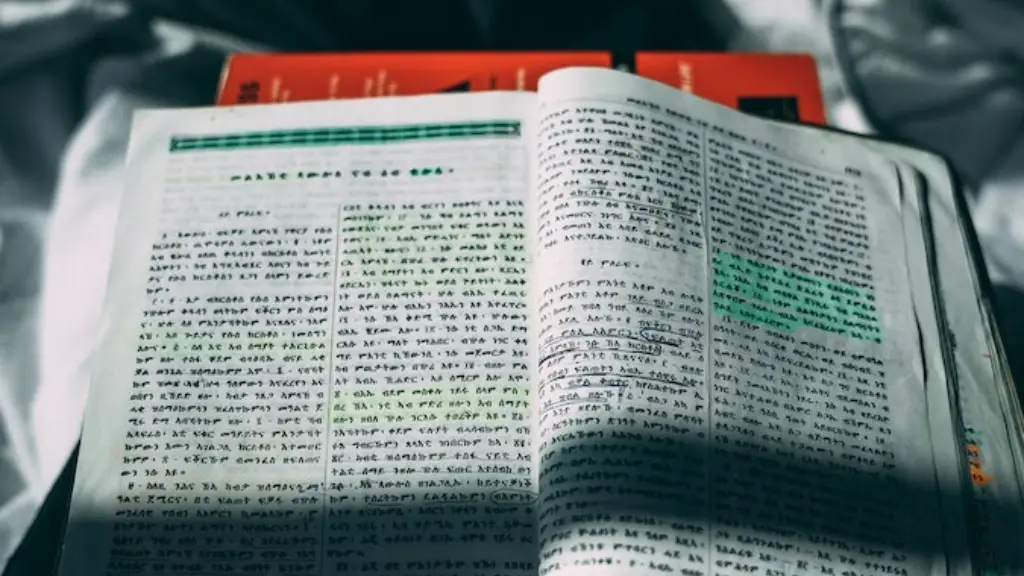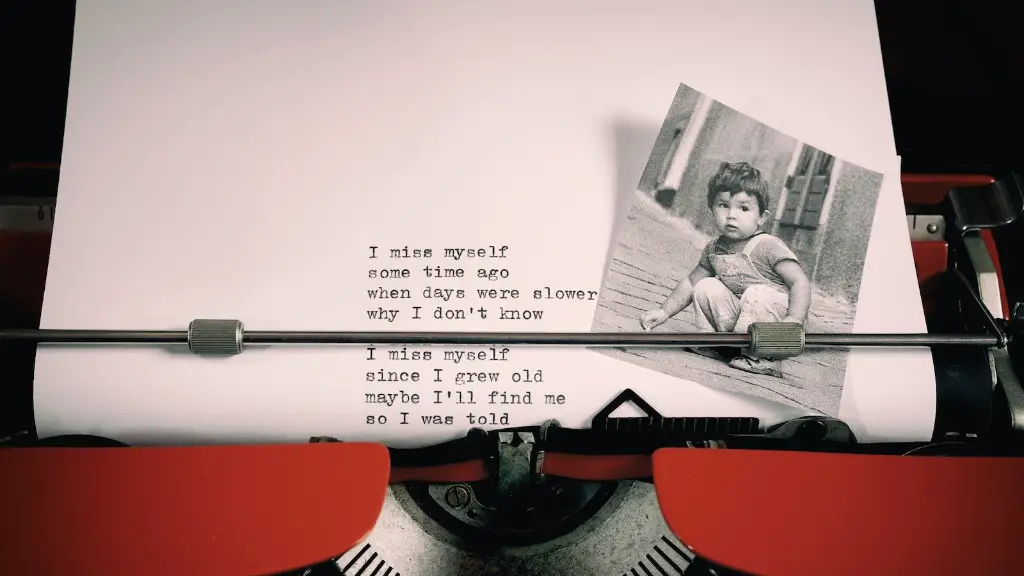When teaching poetry to 8th graders, it is essential to provide an engaging and informative environment for your students. Teaching poetry should allow for students to express their creativity and make connections to their own lives and experiences. Poetry provides an effective means for students to explore and analyze their thoughts, feelings, and ideas.
An effective way to begin teaching poetry is by introducing the fundamentals of poetry. Discuss the various components of a poem such as line breaks, enjambment, rhyme, metaphor, and simile. Explain to your students that poetry can be written in many different forms, such as sonnets, free verse, and haikus. Demonstrate how to use poetic imagery to create a vivid mental image of the poem’s meaning. Invite discussion in which students can ask questions and share their own interpretations of the poem.
Next, introduce students to different types of poetry. Allow them to study and analyze the poems to better understand their meaning. Guide students through the process of understanding the deeper meaning in the text and have them analyze how the poet has crafted the poem to create imagery and form. Encourage them to think about the literary devices and features that the poet has used.
It is also important to discuss the various themes, topics, and motifs present in poetry. Invite your students to share their own insight and ideas upon reading the poem. Prompt them with open-ended questions such as “What do you think the poet hopes to convey with this poem?” and “What did you find most interesting about the poem?”
Finally, challenge your students to compose original poetry. Provide them with examples of different poetic forms and encourage them to express their feelings and experiences in their own creative ways. Allow them to experiment with language and to explore new ways of representing their ideas.
Exploring Metaphors & Similes
Another effective way to help students understand the meaning of poetry is to explore metaphors and similes. Metaphors and similes are literary devices that can be used to compare two unlike items to convey meaning. Explain to students that metaphors compare two unlike things without using any form of ‘like’ or ‘as’. Examples of metaphors include ‘the sun is a beacon of hope’ and ‘my life is an unending sea of sorrow’. Explain to students that similes involve the use of ‘like’ or ‘as’ to compare two things. Examples of similes include ‘life is like a box of chocolates’ and ‘love is like a river’.
Invite your students to explore the metaphors and similes in the poems they are studying. Ask them to consider how these metaphors and similes help convey meaning. Give students the opportunity to write their own metaphors and similes, and have them share their creative output in small groups.
Engage students in a discussion to further explore the metaphors and similes they have found. Ask them to consider why the poet has chosen to use certain metaphors and similes, and invite them to think about the nuances of language. Challenge them to explain the deeper meaning and ideas that these metaphors and similes convey.
Discovering the Poetic Voice
As students begin to study poetry, it is important to focus on helping them discover the poetic voice. Discuss with your students how a poet’s voice is uniquely expressed through language. Explain to them how each poet has their own unique use of words. Give students specific examples of how a poem can take multiple interpretations depending on the way it is written.
To help students develop their own unique poetic voice, encourage them to practice writing in different styles of poetry. Invite them to use their own experiences, thoughts, and ideas to craft meaningful and thoughtful poems. Give students the opportunity to create stories, songs, and rhymes with the poems they create. You can also have students present their work to their classmates in a group setting to further invite discussion.
Discuss with your students the importance of poetic structure. Break down the differences between free verse and formal structure. Explain to students the effects of line length, punctuation, and rhythm on the poem. Guide them through the process of understanding how the poet has crafted the poem to create powerful imagery and form.
Drawing Connections
When studying poetry, it is essential to help students make connections between the poem and the wider world. Invite discussions in which students can explore their own interpretations of the poem. Ask them questions such as “How does this poem express certain values?” or “What current events does this poem remind you of?” Encourage students to think about how a poet could use their craft to convey certain ideas, feelings, or beliefs.
You can also have students draw connections between different poems and other works of literature. Encourage students to analyze the underlying meaning behind each poem and explore how each poet has expressed their own individual ideas. Give students the opportunity to explore their own connections and interpretations and explain their thoughts to their classmates.
It is also important to discuss how a poem can be used to express a message about the world. Invite class discussion on how the poet is making an effort to convey certain truths about the world, and prompt your students to reflect on their own thoughts and beliefs. Prompt students with open-ended questions such as “What messages do you think the poet is trying to communicate with this poem?” and “How does this poem relate to current events?”
Cultivating the Creative Spirit
When teaching poetry to 8th graders, it is important to encourage creativity. Allow students to express their thoughts and feelings in their own creative ways. Provide students with the opportunity to experiment with language and to explore different poetic structures and forms. Challenge them to write their own original poems and invite them to present their work to the class.
You can also encourage students to create original artwork that is related to their poems. Invite them to use different mediums such as drawing, painting, sculpture, and photography to create artwork that conveys their message. Have them consider how their artwork reflects the theme, motifs, imagery, and symbolism that is present in the poem.
Encourage your students to use their own experiences and ideas in the poems they write. Guide them to draw inspiration from their own lives and to think about how their personal experiences can be used to create meaningful and emotive poetry. Give students the opportunity to explore their unique perspectives and express their voice in their poems.
Exploring Personal Growth
Studying poetry is an effective way to help students explore their thoughts, feelings, and ideas. Invite your students to reflect upon their own values and beliefs when studying the poems. Ask them to consider how a poem can be used to communicate certain truths and feelings. Encourage students to think about how art can be used to express their thoughts and feelings.
You can also invite discussion on how poetry can help students gain self-awareness. Ask students to consider how a poem can be used to explore their own self-image, thoughts, and feelings. Guide them to think about how poets have expressed their own pursuit of self-discovery and identity in their work. Give your students the opportunity to reflect on their own personal growth and development.
Finally, ask your students to consider how their interpretation of the poem has evolved over time. Guide them to think about how the poem has taken on a different meaning in their lives. Ask them to reflect on how it has helped them gain an understanding of the world and their place in it. Invite your students to think about how their own personal perspectives can inform their understanding of poetry.
Encouraging Interpreations
When teaching poetry, it is important to create an environment where students are encouraged to exercise their own interpretations of the poem. Encourage students to explore their own ideas and perspectives when studying a poem. Guide them to think critically about their own reactions and interpretations of the poem. Ask them to consider how their opinions have shifted over time.
Provide your students with the opportunity to discuss their interpretations with their peers. Ask them questions such as “What did you find most interesting about the poem?” and “What questions do you have about the poem?” Give students the chance to explore each other’s interpretations and understandings of the poem.
You can also ask your students to consider how their own experiences and backgrounds can inform their readings of the poem. Invite them to think about how the poem takes on a different meaning through their lenses, and ask them to explain their thoughts to their peers.
Developing Critical Thinking
When studying poetry, it is important to help students develop their critical thinking skills. Invite them to think critically about the poem and consider how the poet has crafted the poem to create form and imagery. Challenge them to question their own interpretations and to consider different perspectives.
Encourage your students to analyze the poetic devices and features in the text. Ask them to consider how the poet has used language intentionally to create meaning. Give students the opportunity to discuss their interpretations with their peers. Guide them to consider how the poem takes on a different meaning when viewed through the lens of different individuals.
You can also ask your students to consider how the poem connects to the real world. Prompt them to reflect on how the poem can be used to communicate messages about society. Give them the chance to discuss the importance of art in expressing thoughts and feelings, and ask them to consider how their own understanding of the poem has evolved over time.





